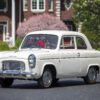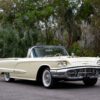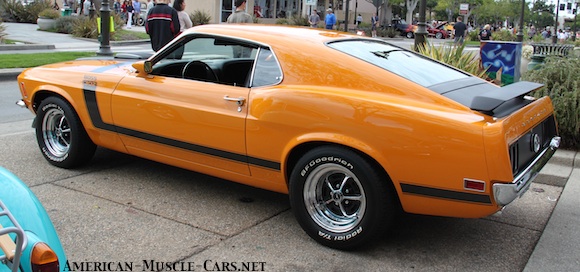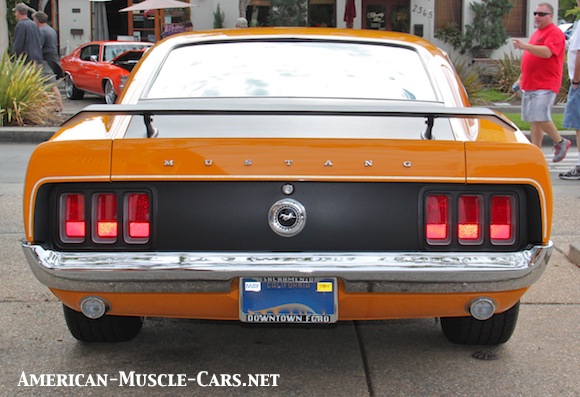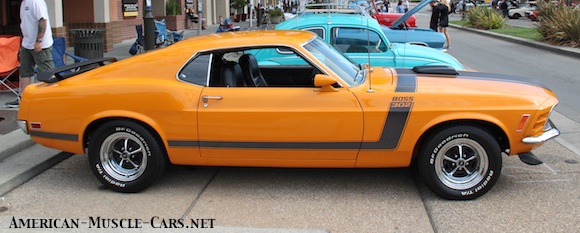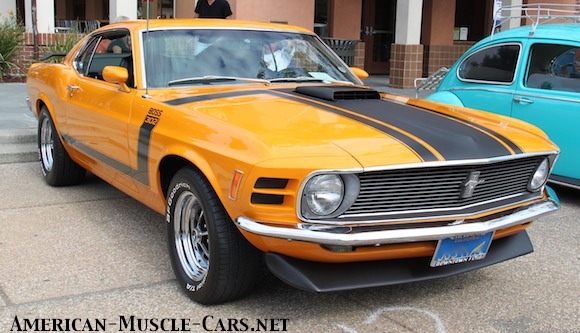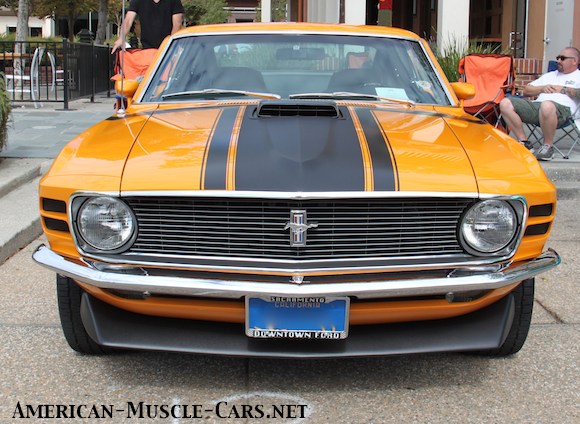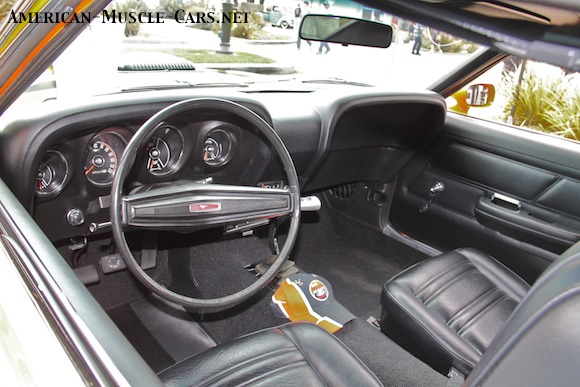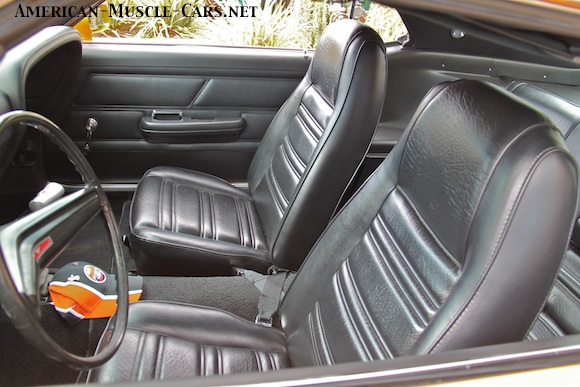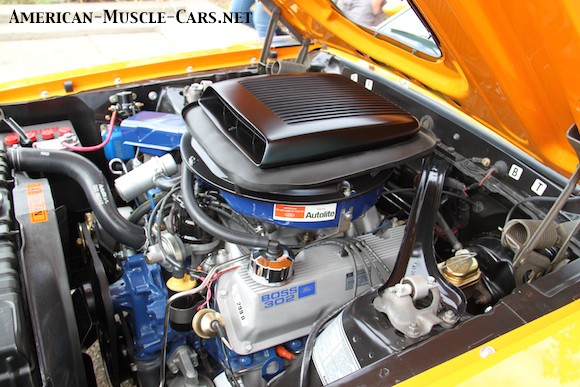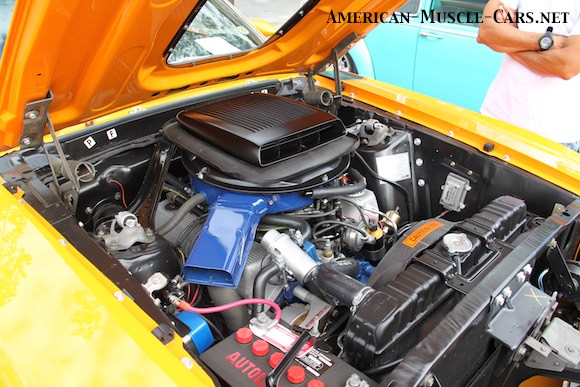1970 Ford Mustang Boss 302

1970 FORD MUSTANG BOSS 302 – A VERY SPECIAL MUSTANG
In addition to all the changes that differentiated any 1970 from a 1969 Mustang, the Boss 302 got some solid improvements along with normal year-to-year changes. They now had body-colored racing mirrors and front spoiler, but since the cars were delivered new to the dealers without the spoilers installed, some never got put installed. The exterior color palette expanded with the addition of the bright “Grabber” colors. The rear deck and taillight panel remained blacked out. The C-stripes of the 1969 Boss 302 were replaced by a bold new stripe set that crossed the hood just in front of the cowl, ran down the fenders diagonally, with “BOSS 302” lettering, then headed straight back, along the doors to the rear quarters, in sort of a “hockey stick”-shape. The wheels and tires were upgraded to 15X7. The rear wing, Sports Slats and Shaker Hood Scoop were all optional on the Boss 302, and some even had hood-mounted tachometers. Most came with standard interior but a few were built with the Decor Group. There was a new 1/2-inch rear stabilizer bar, a Hurst shifter, and the new dual exhaust system using one muffler for each side instead one traverse muffler serving both sides.
1970 Ford Mustang Boss 302 INTERIOR
1970 Ford Mustang Boss 302 ENGINE
1970 FORD MUSTANG BOSS 302 ENGINE
The Boss 302 engine was known to be “peaky”, meaning it didn’t produce big power until very high rpms, making it fast, but very hard to drive. Some effort was made in 1970 to solve this. Smaller intake valves were fitted, reduced from 2.23 inches to 2.19 inches. Even this seems way too big for an engine of this size. The DZ302 in the Camaro Z28 only had 2.02-inch intake valves, and it too was peaky. Even Chevy’s mighty 454 cubic inch big block only had a 2.19-inch intake valve, the same size as this 302 cubic inch Ford engine was downsizing to. It was still peaky, making most of its power above 6500 rpm. Ford decided to drop the expensive cross-drilled crankshaft in favor of a cheaper non-drilled unit, finding that it made no difference in street use. Visually, the chromed pressed-steel valve covers were replaced by finned cast-aluminum valve covers.
1970 Ford Mustang Boss 302 SPECIFICATIONS
| Model
Body style & Body style # Production Price when new Wheelbase Length Width Height Weight ENGINE SPECS Engine type Displacement Bore & Stroke Compression ratio Fuel system Horsepower output @ RPM Torque output @ RPM PERFORMANCE Zero-to-60mph 1/4-mile ET @ MPH |
1970 Ford Mustang Boss 302 Sports Roof (fastback) / 63A 7,013 $3,720 108.0 in 187.4 in 71.3 in 51.3 in 3,227 lbs 302ci OHV V8 302.6 ci / 4942 cc 4.00″ X 3.00″ 10.5:1 1X4bbl carburetor 290 hp @ 5800 rpm 290 lb/ft @ 4300 rpm 6.5 sec 14.8 sec @ 96 mph |
101.6 mm X 76.2 mm
Holley 780 CFM |


